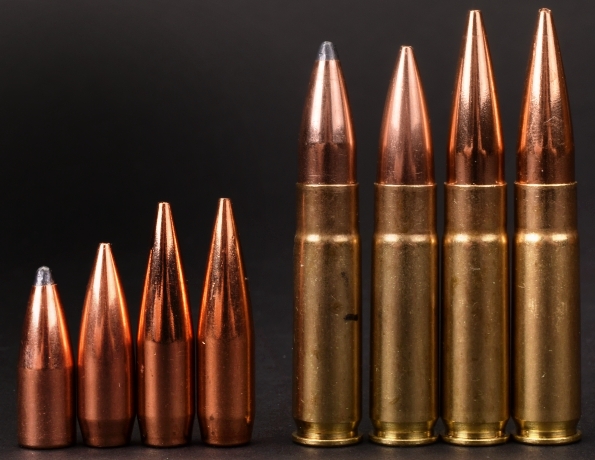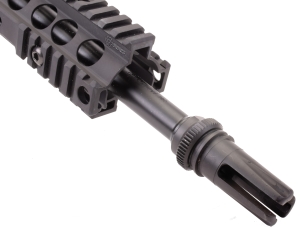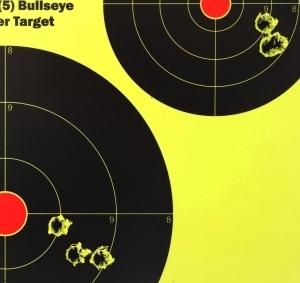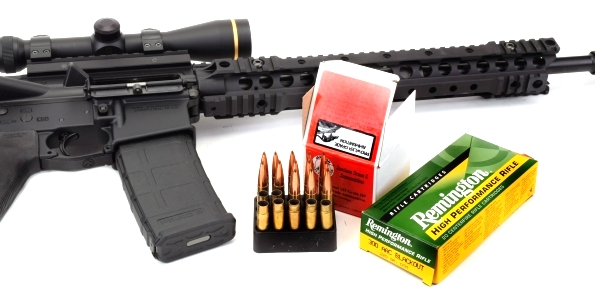
A long time ago, a good friend told me that the easiest way to stay on point when writing is to condense the objective of the work to a short sentence and keep that sentence in clear view when writing. So I did. No personal computers yet in existence, I taped each communication objective right there to the top of my IBM Selectric. Today that trick doesn’t work, because I am more interested in researching and learning. Subsequently, writing begins with an area of interest or curiosity and ends up where ever it ends up; usually with some answers and, typically, many more questions. The product brands aren’t really of consequence, other than as ingredients and how they perform in that respect.
Gas; nature’s invisible friend
The subject of gas and understanding of its uses seems to follow us through life. As children, gas is a component of a great offense/defense against siblings. Gas allows us to find adolescent humor in Shakespeare, “A man may break a word with you, sir; and words are but wind; Ay, and break it in your face, so he break it not behind” A Comedy of Errors. Understanding Boyle’s Law and Kinetic Theory prepares us for a career in plumbing, internal combustion engine intake and exhaust system design or propulsion sciences, depending on our bent.
With less case capacity than the 5.56 NATO, and nearly twice its bore volume, the 300 Blackout does not have sufficient gas volume production or pressure persistence to function reliably with a non-adjustable rifle or mid length gas system. On the other hand, the 300 Blackout is a little intense for a non-adjustable pistol length gas system and supersonic ammunition. A 16″ barrel seems to work well with a carbine length gas system in terms of performance, reliability and durability. In more quantified terms, I think it looks something like this –
| Type Gas System |
Example Barrel Length” |
Gas System Length “ |
Port PSI |
Post Port Barrel Length “ |
Post Port Barrel Time MS |
Muzzle Pressure PSI |
| Rifle | 20 | 12 | 4800 | 8″ | .357 | 2400 |
| Mid | 18 | 9 | 7300 | 9″ | .408 | 2890 |
| Carbine | 16 | 7 | 9300 | 9″ | .410 | 3400 |
| Pistol | 12.5 | 4 | 19000 | 8.5 | .423 | 5880 |
While buffer weight and port size and placement can be balanced to accommodate different barrel lengths and gas systems, in general, pressure at the port increases as gas systems are shortened, as does muzzle pressure, as do secondary recoil and report. The AAC 300 Blackout MPW used for this project has a 16″ barrel and a carbine length gas system. It never failed to feed or eject and the bolt always stayed open when shot until empty with sub or supersonic factory ammunition or handloads.
300 Blackout handloading economics…
Handloading the 300 Blackout was straight forward and inexpensive. Good and appropriate bullets cost between 30¢ cents and 60¢ cents each, powder at today’s prices costs approximately 5¢, small rifle primers run 6¢, and brass casings 30¢ per round. Brass can be reused at least 4 – 6 times which puts the net cost per casing between 7.5¢ and 5¢. So the cost to produce handloads for the 300 Blackout is somewhere between $7 and $14.50 per twenty rounds. Commercially loaded recreational target ammo, supersonic 147 grain, is available through discount retailers for just about $9 for twenty rounds when purchased in 200 piece bulk, so being a handloader is not a prerequisite to inexpensive shooting.
Performance expectations….
 SAAMI specs the 300 AAC Blackout with a Pmap of 55,000 PSI and assigns 16″ barrel bullet/velocity standards of 115 grain @ 2,270 fps, 123 grain@2,280 fps and a 220 grain bullet@1,020 fps. The 220 grain is defined as a subsonic standard, the others as supersonic.
SAAMI specs the 300 AAC Blackout with a Pmap of 55,000 PSI and assigns 16″ barrel bullet/velocity standards of 115 grain @ 2,270 fps, 123 grain@2,280 fps and a 220 grain bullet@1,020 fps. The 220 grain is defined as a subsonic standard, the others as supersonic.
After trying a number of flat based light weight bullets that I thought would work great, and found they did not, I settled on the bullets indicated on the table below as they performed the best. All were intended to be supersonic.
The Hornady 130 grain survived as the only flat base bullet, the rest are boat tail. Additionally, Sierra Match and Berger VLD bullets were selected because of their longish length. All bullets selected were verified as having plenty of rifling, magazine and bolt stroke clearance. All bullets were retained with neck tension and a Lee Factory Crimp die.
 |
Warning: Bullet selections are specific, and loads are not valid with substitutions of different bullets of the same weight. Variations in bullet material and length will alter net case capacity, pressure and velocity results. Primer selection is specific and primer types are not interchangeable. These data represents maximum loads in our firearms and test equipment and may easily be excessive in other applications. All loads should be reduced by 5%, and developed following safe handloading practices as represented in established reloading manuals produced by component manufacturers. Presentation of these loads does not constitute a solicitation for their use, nor a recommendation.
|
|||||||||||||||||||||||||||||||||||||||||||||||||||||||||||||||||||||||||||||||||||||||||||||||||||||||||||||||||||||||||||||||||||||||||||||||||||||||||||||||||||||||||||||||||||||||||||
|
||||||||||||||||||||||||||||||||||||||||||||||||||||||||||||||||||||||||||||||||||||||||||||||||||||||||||||||||||||||||||||||||||||||||||||||||||||||||||||||||||||||||||||||||||||||||||||
 Accuracy was good. I thought factory ammo performance was stellar and the weight spread didn’t reflect the MPW’s preference for either. Lil’ Gun loads ran a bit warm. This very light firearm’s recoil and muzzle jump were minimal Factory round targets pictured left.
Accuracy was good. I thought factory ammo performance was stellar and the weight spread didn’t reflect the MPW’s preference for either. Lil’ Gun loads ran a bit warm. This very light firearm’s recoil and muzzle jump were minimal Factory round targets pictured left.
IMR4227 was tried without much success in terms of velocity or accuracy. Alliant 2400 delivered about the same level of performance. No powder used seemed optimal. H110 works great for 45 Colt performance loads when it fills a case to compression. It was not possible to reach full case loads with the 300 Blackout. Seating bullets more deeply to get close to a case full reduced velocity and accuracy. The only powder types that came close to filling the case lacked energy; full case, low velocity.
The 300 Blackout cartridge is an interesting performer, but not so much in comparison to other more mundane firearms I use on a routine basis for recreational target practice and for small and medium game hunting.
| 223 Remington 55 Grain 24″ Barrel | |||||||
| Yards | 0 | 50 | 100 | 150 | 200 | 250 | 300 |
| Velocity – fps | 3200 | 3007 | 2822 | 2644 | 2472 | 2308 | 2150 |
| Energy – ft.-lbs. | 1250 | 1104 | 972 | 853 | 746 | 650 | 564 |
| Path – in. | -1.5 | 1.0 | 2.5 | 3.0 | 2.2 | -0.1 | -3.9 |
|
Best Zero Results |
|||
|
Near Zero -Yards |
28 |
Midrange -Yards |
144 |
|
Far Zero -Yards |
249 |
Max Ordinate “ |
+3.0 |
|
Point Blank -Yards |
290 |
– |
– |
| 300 Blackout 135 Grain 16″ Barrel | |||||||
| Yards | 0 | 50 | 100 | 150 | 200 | 250 | 300 |
| Velocity – fps | 2239 | 2136 | 2036 | 1939 | 1845 | 1754 | 1665 |
| Energy – ft.-lbs. | 1502 | 1368 | 1243 | 1127 | 1020 | 922 | 831 |
| Path – in. | -1.5 | 1.7 | 3.0 | 2.2 | -1.0 | -6.6 | -15.1 |
|
Best Zero Results |
|||
|
Near Zero -Yards |
20 |
Midrange -Yards |
106 |
|
Far Zero -Yards |
188 |
Max Ordinate “ |
+3.0 |
|
Point Blank -Yards |
221 |
– |
– |
|
30-30 WCF 20″ barrel |
|||||||
|
Yards |
0 |
50 |
100 |
150 |
200 |
250 |
300 |
|
Velocity – fps |
2300 |
2177 |
2058 |
1943 |
1831 |
1724 |
1622 |
|
Energy – ft.-lbs. |
1879 |
1683 |
1504 |
1340 |
1191 |
1056 |
934 |
|
Path – in. |
-1.5 |
1.6 |
3.0 |
2.2 |
-0.8 |
-6.5 |
-15.0 |
|
Best Zero Results |
|||
|
Near Zero -Yards |
20 |
Midrange -Yards |
108 |
|
Far Zero -Yards |
190 |
Max Ordinate “ |
+3.0 |
|
Point Blank -Yards |
222 |
– |
– |
| 260 Remington Berger 140 VLD 20″ Barrel | |||||||
| Yards | 0 | 50 | 100 | 150 | 200 | 250 |
300 |
| Velocity – fps | 2685 | 2614 | 2544 | 2475 | 2408 | 2341 | 2276 |
| Energy – ft.-lbs. | 2241 | 2124 | 2012 | 1904 | 1802 | 1703 | 1610 |
| Path – in. | -1.5 | 1.3 | 2.8 | 2.9 | 1.6 | -1.2 | -5.5 |
|
Best Zero Results |
|||
|
Near Zero -Yards |
24 |
Midrange -Yards |
130 |
|
Far Zero -Yards |
232 |
Max Ordinate “ |
+3.0 |
|
Point Blank -Yards |
273 |
– |
– |
Conclusions?
The usefulness of a firearm/cartridge combination is tied directly to its owner’s applications. If I needed to boost the power of a 5.56 NATO AR at a minimal cost, the 300 Blackout would fit well. If a subsonic, suppressed round was important, again, the 300 Blackout would be a good fit. If high magazine capacity and low ammunition weight were considerations, the same would apply. The 300 Blackout has many unique special circumstance qualities, but for hunting… hogs, deer, black bear, my applications, there are many better. I am not suggesting the 300 Blackout is an inferior cartridge, but I am saying I can’t think where it would be a good fit for me.

Advanced Armament Corps 300 Blackout Part 1
Advanced Armament Corps 300 Blackout Part 2

Email Notification